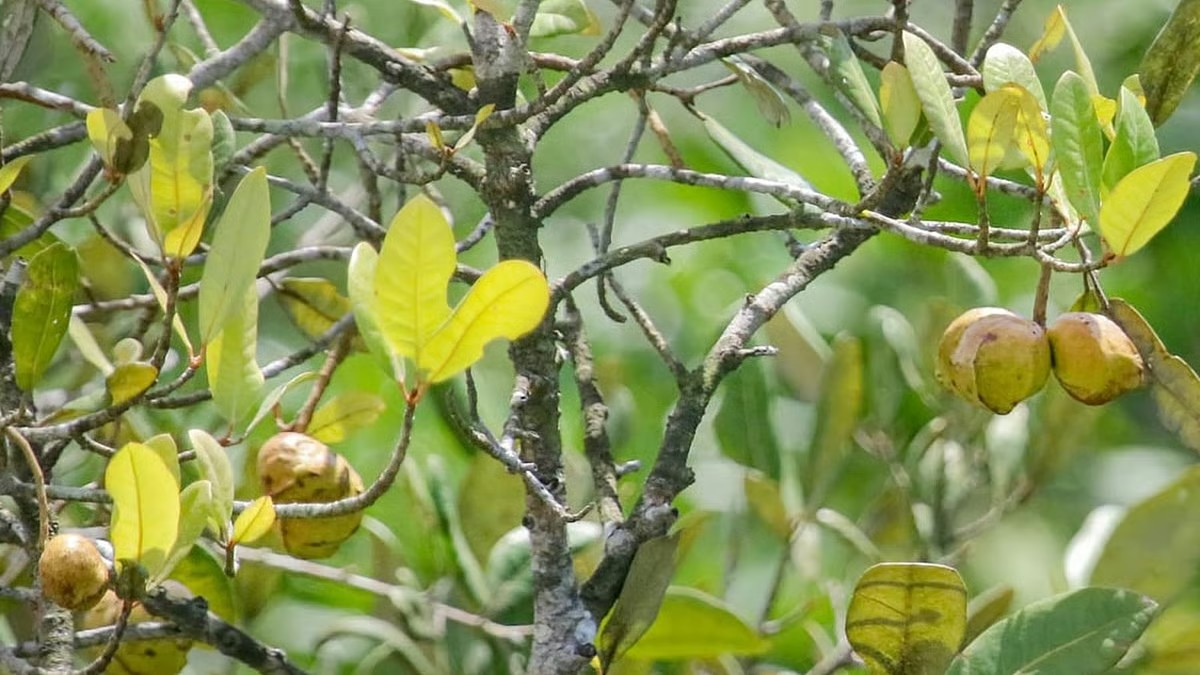Many believe that the Sundarbans got its name from the Sundari tree. But recent research reports say that the most ancient tree of the Sundarbans is now facing an existential crisis. Five researchers from Australia's University of Sydney and University of Sunshine Coast, America's University of Florida, and Germany's Dresden University have jointly prepared this report.
How much has it decreased?
Previously, it was 76%, now it has come down to 60%. Sundari tree leaves are usually small in size. The flowers are yellow in colour. Like any mangrove plant, the Sundari tree has pneumatophores and prop roots.
What are pneumatophores?
Pneumatophores are specialised aerial roots that enable plants to breathe air in habitats with waterlogged soil. The roots may grow downward from the stem or upward from typical roots. Some botanists classify them as aerating roots rather than aerial roots if they emerge from the soil, according to Wikipedia.
These types of roots are found in the trees growing in the mangrove region. Where the fresh water source is scarce and the ground is submerged most of the time.
Also Read | Jadavpur University proposes DLitt for Harmanpreet Kaur: Here's what we know so far
Where have Sundari trees decreased?
Usually found in the south-eastern regions of India, mainly in the Sundarbans of West Bengal. They are prominently found in areas like Sagar, Kakdwip, Namkhana, Patharpratima, Hinglganj, and Sandeshkhali. Reports found that recently, the number of Sundari trees has decreased in Sagar, Kakdwip, Namkhana, and Patharpratima.
Changes in their height have also been observed. Previously, the average height of a Sundari tree was 20-25 meters. Now it has reduced to 12-15 meters. A survey report called 'Tree and Forest Resources of Bangladesh' has claimed that the number of new trees growing from Sundari saplings has also decreased.
Increasing salinity in the water
Taking the pre-1975 figures, salinity in the Hooghly river has doubled. From April to November, the salinity level was recorded to be hovering between 30-32 ppt. Salinity in the Raimangal river is 6-7 ppt. Last year in July, the salinity of four meters below in Bidyadhari at Satjelia was 12-17 ppt.
Sundari trees prevent soil erosion, small fish and shrimp take shelter in the roots, protect the coast from cyclones and storm surges, while birds, deer and tigers take shelter in these trees.
Also Read | KKR superfan Ashok Chakraborty hoists team flag at Everest base camp
Reasons for the decline of Sundari trees
The major reasons that have accelerated the decline of Sundari trees are - excessive increase in salinity in the rivers of the Sundarbans, decreased freshwater supply from above, increasing water temperature, decreased silt in rivers, climate change, rise in sea level, and low capacity to withstand storms.
Sundari trees are evergreen trees. They prefer fresh water. Due to an excessive increase in salinity in the Hooghly river, the number of Sundari trees in the western part of the Sundarbans is rapidly decreasing. Before the Farakka Bridge was built, there were as many Sundari trees in the Sundarbans as we don't see anymore, said Ashis Kumar Paul (former professor of geography at Vidyasagar University and mangrove researcher)
Dhirendranath Mandal, a resident of Chargheri in Gosaba, stated that earlier, during their childhood, they used to see plenty of Sundari trees in their area. As days pass, it's decreasing. They are really unsure whether they will be able to see them in the future or not.










